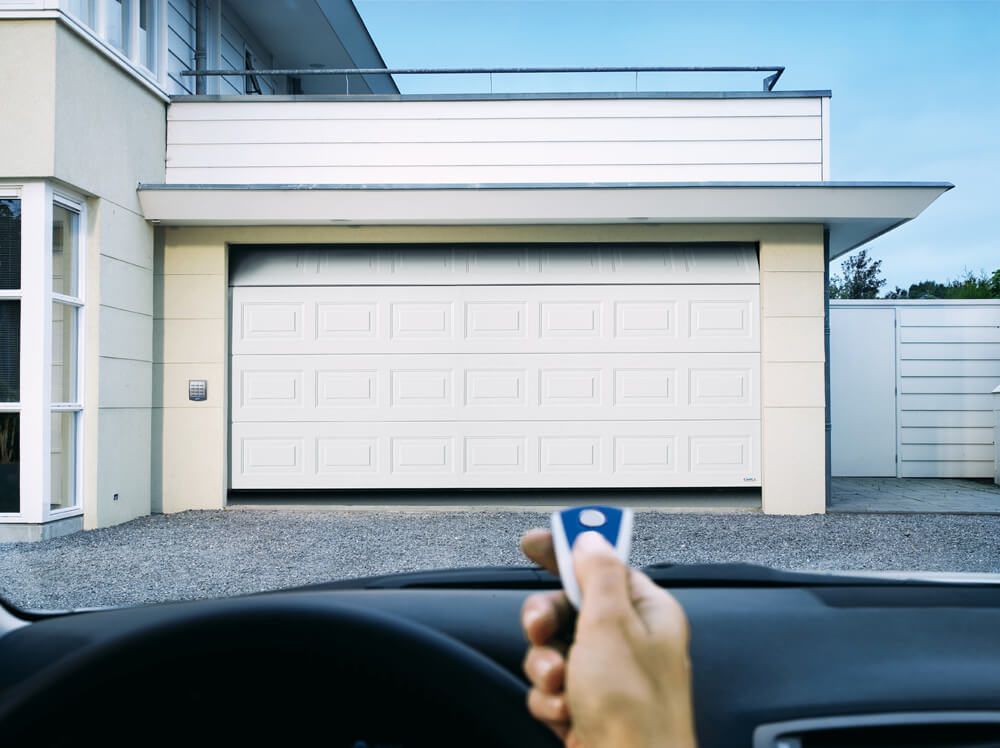The Ultimate Guide to Automatic Garage Door Repairs

Having an automatic garage door opener is incredibly convenient, but like any mechanical system, they can sometimes malfunction or need repairs. When something goes wrong with your garage door, it can be frustrating trying to figure out the problem and get it back to working order.
We’ve carried out installations and repairs for automatic garage doors in Kent, Sussex and across the southeast, so we’re well equipped to identify and rectify any issues you may have. Whether your door just needs a quick adjustment or more extensive repairs, our guide will cover the most common problems garage owners deal with and tips on how to resolve them.
Common Problems and Solutions
Door Not Opening or Closing
Start by checking a few key troubleshooting spots. First up is power – ensure the outlet has power and the breaker hasn’t tripped. Verify all the wires connecting to the motor are inserted firmly. Next, take a look at the safety sensors on both sides of the door. If they’re dirty, give them a quick cleaning so they can properly detect obstructions. You’ll also want to make sure the sensors are correctly aligned and nothing is blocking their pathways.
Friction from metal tracks and rollers can also prevent smooth operation – use a garage door lubricant on these moving parts to reduce drag. Applying a lubricant regularly actually helps avoid stuck doors in the first place. Just a few quick checks and maintenance tweaks like these can get your garage door moving again so you can get vehicles in and out with ease.
Noisy Operation
A common problem with automatic garage doors that haven’t been well maintained is noisy operation of the door as it opens and closes. Luckily, there are a few straightforward solutions that can address the underlying issues causing the noise. Inspect the rollers and hinges that allow smooth travel of the door and apply a door lubricant to any that appear dry. This can eliminate any squeaking or grinding noises from friction.
Another culprit of noisy operation is loose hardware. Check all screws, bolts and fasteners on the door panels, tracks, springs and motor unit, and tighten anything loose to eliminate rattling vibrations. Worn out rollers, cables or garage door parts can also cause excessive noise. Replacing damaged rollers, frayed cables or worn parts like hinges and pulleys can return the door motion to quiet operation. Routine inspection and lubrication along with addressing loose or worn parts are simple, do-it-yourself solutions for quieting unwanted noises from the automatic garage door.
Reversing Door
The automatic garage door reversing unintentionally while closing is a safety feature but can be a nuisance if it’s activating when there’s no obstruction. There are a couple of things to check in this situation. First, inspect the doorway thoroughly and test the door to see if there are any objects breaking the safety sensor beams near the bottom of the doorway. If so, clear the obstruction and realign or clean the sensors so they have a clear line of sight to operate properly.
If no obstruction is found, the next step is to adjust the closing force and sensitivity. There are dials or buttons located on the garage door opener unit that control the amount of force used when closing and the sensitivity to reversal. Turning down the force slightly or decreasing the sensitivity can prevent the door from reversing when there’s no obvious blockage. Just take care not to adjust to an unsafe level. The goal is finding the right settings that allow unobstructed closure while still reversing if needed for safety.
Door Opening and Closing By Itself
If the garage door is opening and closing by itself, there are a few possible solutions to address the problem. The safety sensors may have become misaligned and need realignment so they can properly detect obstructions in the doorway again. Another possibility is the remote control or wall button is stuck engaged, continually sending the open/close signal to the door.
Try cleaning the contacts on the button with electrical spray or replace the remote or button if needed. Faulty wiring could also be an issue, where damaged insulation or pinch points are shorting out and sending stray signals. Inspect the wiring from the motor to the wall controls and replace any damaged wires. If the garage door has updatable software, installing the latest manufacturer update may also fix any glitches causing the self-activation.
Having an automatic garage door certainly makes coming and going much easier and faster. But like any frequently used mechanical device, it’s bound to run into problems at some point. The good news is that armed with the information in this guide and help from our specialist team, you can troubleshoot and fix most common garage door issues. If you need assistance or professional repairs, don’t hesitate to get in touch with a member of our team today.
